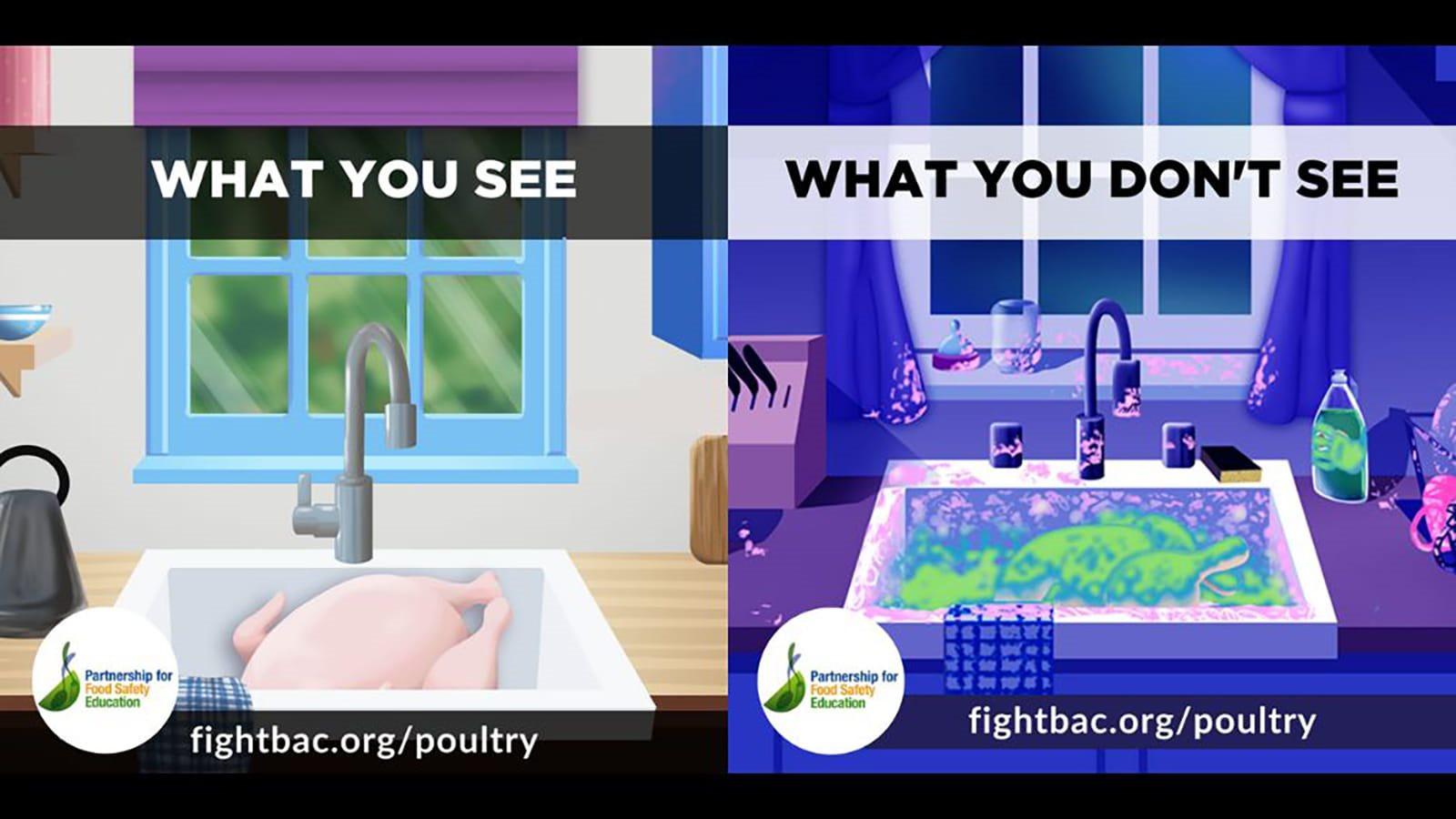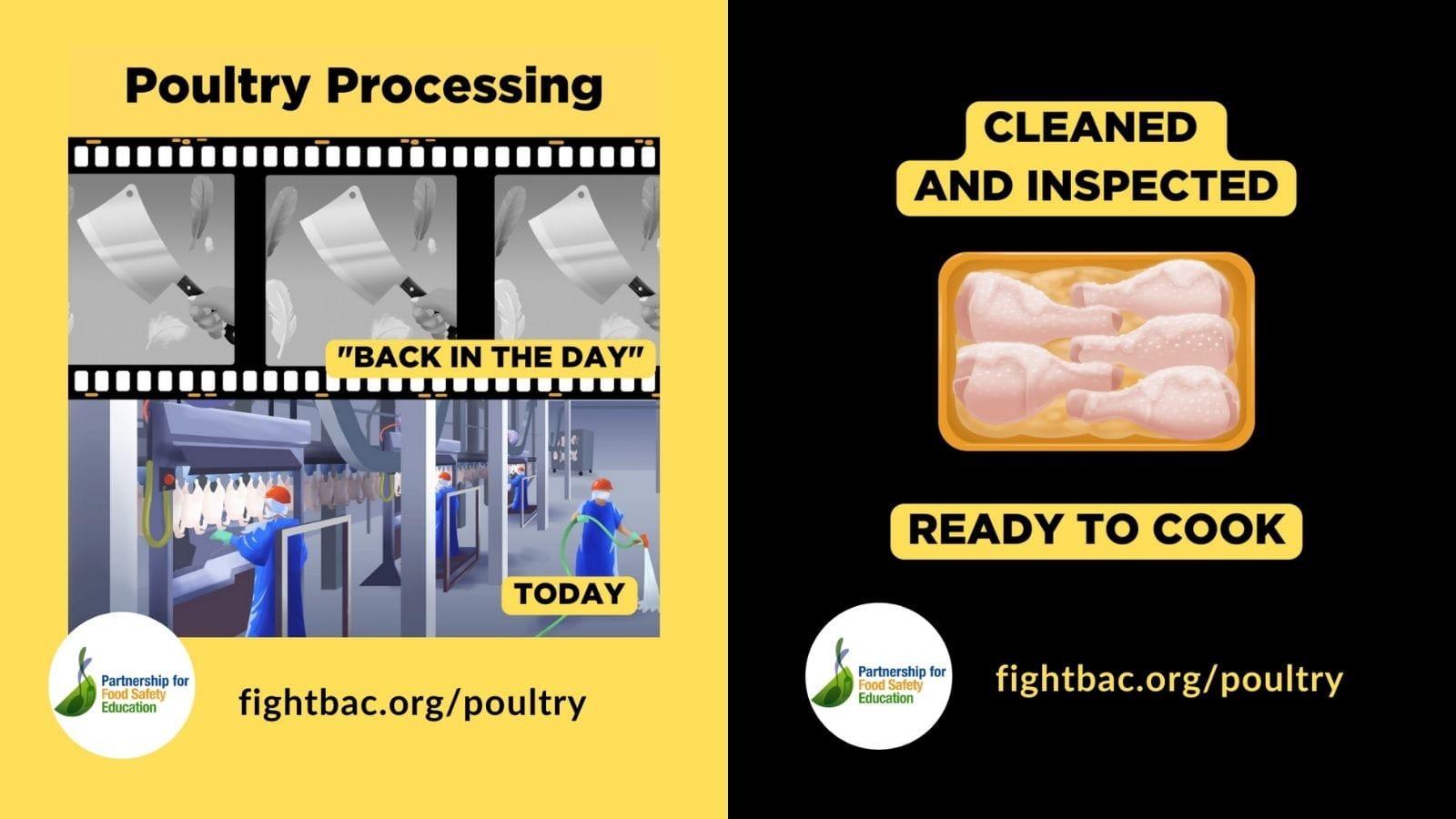Don’t Wash Your Chicken: It’s Risky, It’s Unnecessary and There’s a Better Way!

- Drexel Selects New, World-Class Life Sciences Building at 3201 Cuthbert Street for Medical Research Operations
- Turn Happy Places and Memories into a Happy New Year
- Breakthrough on Gene Therapy for Hereditary Spastic Paraplegia
- Drexel Environmental Collaboratory Releases Cross-Sector Findings on Severe Weather Recovery Challenges

Some bad habits are hard to break. Researchers from Drexel University’s College of Nursing and Health Professions, in collaboration with the non-profit Partnership for Food Safety Education (PFSE) and New Mexico State University, are hoping to help people curb at least one – often unwitting bad habit – the washing or rinsing of raw chicken.
To celebrate National Food Safety Education Month in September, PFSE, Drexel and New Mexico State University, have launched “Don’t Wash Your Chicken,” an educational program aimed at households preparing and cooking raw chicken at home. Informed by research co-authored by Jennifer Quinlan, PhD, a professor in the Nutrition Science department in the College, this program explains why certain poultry handling practices at home are risky and provides practical guidance people can take to reduce their risk of food poisoning.
Salmonella found on poultry products contributes to 93 million cases of foodborne illness each year. But a large percentage of consumers are still not aware that they should not wash raw poultry.
“Washing raw poultry continues to be prevalent in the U.S.,” said Quinlan. “But our research shows that people are open to educating themselves as to why washing raw chicken is unnecessary and possibly changing their behavior.”
The “Don’t Wash Your Chicken” program features four animated videos to help home cooks stay healthy while preparing and cooking raw chicken. With a younger audience in mind, the videos provide attention-grabbing food safety messages. The latest videos are an update to materials created by the collaboration in 2013. Quinlan and her co-authors found that home cooks continue to wash raw poultry because they desire to control the process of preparing food, have a lack of trust in chicken processing and/or the habitual nature of the behavior. This program aims to help households understand how chicken is processed before they get it, learn the risks of washing raw poultry, as well as how to safely handle and cook poultry at home.
Washing or rinsing chicken increases risk. Salmonella, Campylobacter and other harmful bacteria live on raw chicken. Washing or rinsing doesn’t remove this risk, it worsens it by helping the bacteria spread. When you add water through washing or rinsing, you give these bacteria a way to travel throughout your kitchen.
Along with the videos, “Don’t Wash Your Chicken” highlights three key safe poultry handling messages:
- Washing or rinsing chicken increases risk. Salmonella, Campylobacter and other harmful bacteria live on raw chicken. Washing or rinsing doesn’t remove this risk, it worsens it by helping the bacteria spread. When you add water through washing or rinsing, you give these bacteria a way to travel throughout your kitchen.
- Chicken has already been washed. Today’s manufacturing cleans the chicken, so there is no filth, feathers, or anything else on it that needs to be washed off. Poultry may have a coating of water and protein: this gets cooked off, or you can remove it with a clean paper towel and then wash your hands.
- There’s a better, safer way to cook chicken. If you see anything on the chicken you want to get rid of, wipe it off with a clean paper towel and then wash your hands. Separate raw chicken from fresh and ready-to-eat foods. Keep surfaces clean by washing them with hot, soapy water. Cooking chicken to 165°F using a food thermometer will kill any dangerous bacteria and make it safe to eat.

In This Article
Contact
Drexel News is produced by
University Marketing and Communications.